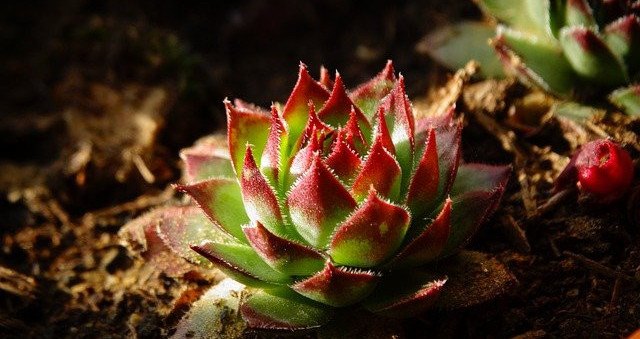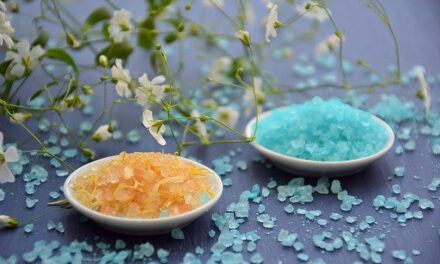Nature, in its abundance, blessed us with different plants and herbs that help in treating different diseases and illnesses. Most of the drugs we take are somehow produced from plants. For diabetics, there are so many plants that are very useful for their condition. One of these plants is house leek. In this Review of House leek and Diabetes, we will be finding out how can houseleek help diabetics.
House leek does not just help diabetics, it is also very useful for other illnesses like diarrhea. But, that’s a topic for another article.
Let’s dive in by finding out what house leek really is…
What is House leek?
House leek is a plant whose non-flowering part is used in making medicine. It is also called old-man-and-woman or hens-and-chicks.
People use house leek for different purposes. It is of the genus sempervivum and also called ‘live forever’.
House leek is native to Europe, Morocco, and Western Asia. Its venue is about 30 species of low-growing succulent plants in the stonecrop family. The name house leek could be because it has been noted to grow in thatched roofs in Europe.
‘Live Forever’ shows that it is hard and durable. House leek has further given rise to many cultivated varieties that are of cultural interest.
History of House leek Plant
The word leek is derived from the Anglo-Saxon word “leac” which means plant. So the name house leek means ‘house plant’, which is why it was always in the Roman households. They used to grow house leek in vases near their windows.
Its scientific name “sempervivum tectorum” means “always alive on the roof”. Till date, this house leek plant can still be found on roofs of cottages in rural Mid and South West in Wales in UK.
This plant inherits so many beliefs by different people. For the Welsh, if you remove house leek from their roof, or if a stranger picks it, it might cause bad luck for them or even the death of a family member. They believe that house leek protects the house from fire and lightening, and also keeps them safe and make them prosperous.
If ever house leek will be removed, it will be carefully transplanted to a rockery, where it will be used for strings. This is because it has a good anti-inflammatory property and helps in relieving the pain of insect bites and strings immediately.
The story is that the Holy Roman Emperor Charlemagne (742-814AD) ordered all his subjects to grow house leek on their roof so that it can protect them from lightning. It was also believed in the ancient times that house leek was connected to Jupiter (the thunderer) and with Thir, the Norse God of thunder. This explains some of the numerous names’ house leek is known for like ‘Jupiter’s beard’, ‘Jupiter’s eye’, and ‘Bullock’s eye’.
In Anglo-Saxon, house leek has been called ‘Sengreen’, ‘Ayran’, and ‘Ayegreen’, which means that it is evergreen.
Germans call it Donnersoart, which means ‘thunders Beard’.
Discorides, suggests that House leek is good for helping weak eyesight and inflamed eyes. The House leek juice can also be used to soothe the eyes.
Pliny also beliefs that when House leek juice is taken internally, it could cure insomnia.
These and so many other beliefs were attributed to the house leek plant as the evidence was very clear from in those days.
House leek Tea
In addition to all the numerous benefits of House leek itself, it can also be used as Tea.
House leek tea can be used as a soothing remedy for so many conditions. Asides from drinking the House leek tea, it can be used as a topical application to handle skin problems and small wounds. For you to get the best out of your tea, ensure that you use the freshest leaf.
How To Prepare House leek Tea?
To prepare a House leek Tea,
- Get a few dry sliced leaves and place them in a small bowl.
- Cut the leaves into fine form
- Add 250ml of water to the pot and cover.
- Keep the temperature at 80° maximum for about 15 minutes.
- After that, allow the tea to cool, sieve or drain it and then drink.
- Take a quarter of your cup with your meals three or four times each day.
Health Benefits of House leek and House leek Tea
Till now, there is no scientific backup for house leek being good for the health. Nevertheless, house leek has been commonly used to treat certain conditions like cysts, hemorrhoids, ear infections, colitis, and also infection of the urinary tract.
House leek is still used in full today because so many cultures believe that it is effective due to its chemical composition. The chemical composition of House leek plants includes
- malic acid,
- formic acid,
- tannins,
- calcium palate, and
- small amounts of resin.
These chemical compositions are strongly believed to give House leek its anti-inflammatory, antiseptic and diuretic abilities.
The health benefits of House leek includes;
- It can be used in treating ear infections
- It fights diarrhea
- It is highly effective in the treatment of urinary tract infections
- It helps in lifting digestive problems such as cramps, bloating and constipation.
- It is very useful in fighting hemorrhoids
- It helps in treating cysts, fibrous and warts.
- When applied to the skin, it helps in soothing skin irritation due to burns, bites and rashes.
Using House leek to Treat Ear Infections
It has been a long term traditional practice to use House leek to treat ear infections.
How it works
- 1. Extract the juice of a fresh House leek leaf.
- 2. Add a few drops into the affected area.
- 3. Gently turn your ear to the side in a way that it will be facing upwards.
- 4. Live it for a few minutes before you allow it to drain away.
Using House leek Plant to Treat Hemorrhoids
For over a long time, House leek has been considered very effective for treating hemorrhoids. You can also use House leek as a natural wash.
How it works
- Get two fresh house leek leaves and chop them into fine pieces.
- Get a good amount of olive oil and mix them with it.
- Get a soft pad, and place some of the mixtures on it and then apply it to the affected area.
- Repeat the application several times during the day.
House leek and Honey
Mixing honey and house leek has been noted to be of great benefit as it serves to detoxify and purify organisms from different accumulated toxins. The effect of this combination is very soothing, even after consuming high-calorie meals.
When you feel tensed, nervous, or scared, you can also use this combination.
Benefits of House leek Tea
House leek tea solves the problem of skin irritation, digestive system and the urinary tract. It also helps with menstrual cramp problems and gastritis.
Can House leek Help Diabetics?
Diabetics are very prone to sustaining wounds, and this keeps them open to all sorts of bacteria and infections. Moreover, house leek has been noted to have a good health benefit, and diabetics haven’t been left out.
Generally, natural plants and herbs are very good for diabetics as most synthetic drugs have been noted to have terrible side effects on diabetics.
Yes, house leek plant and tea can be very helpful for diabetics but within the recommended range and dose.
What Does the Research Say? What are the Concerns?
Sempervivum tectorum has been demonstrated to help in enhancing cellular proliferation and migration. This suggests that sempervivum tectorum has a great role to play in therapeutic treatment for wound healing.
The concern is that some herbs can interfere with the treatment process of some drugs. So you have to be in check with your medical personnel.
Again, I should say there is no full scientific proof backing up the benefits of house leek, the use of house leek for the cure is all based on speculations.
How Much House leek Should You Consume a Day?
The dose of House leek you should take a day depends largely on several factors like health and age.
For whatever house leek product you buy, check the description to ascertain the amount you can take.
Other Herbs and Herbal Teas You Could Consider with Diabetes
As a diabetic, always go for teas that will help promote your blood control, reduce inflammation and enhance insulin sensitivity. This is because diabetes is characterized by high blood sugar levels, which is either due to inadequate secretion of the blood sugar-regulating hormone insulin, or reduced sensitivity to insulin.
Always go for beverages that are calorie-free, rather than sugary beverages.
List of Herbs for Diabetics
1. Allium Sativum
This is also known as garlic.
A few studies have shown a positive result stating that allium helps with insulin and blood glucose levels. It might cause a reduction in blood glucose and also slow degradation of insulin.
Allium is also believed to offer anti-oxidant and micro-circulatory effects.
The data for these claims is still very limited. As such more research and trials still need to be carried out concerning Allium.
2. Bauhinia forficata
This grows in South America and Brazil, and Brazilians widely apply it to their herbal cures. The plant is also been referred to as vegetable insulin. It has a hypoglycemic effect.
3. Murcia uniflora
This is widely used in South America, and it has a good hypoglycemic effect.
4. Coccinia indica
Coccinia indica is the herb widely known as ivy gourd. It is very common across the Indian subcontinent. Traditionally, coccinia indica has been used as ayurvedic remedies. This herb is also known to mimic the function of insulin.
Recent studies show that vaccinia indicate has a function of glycemic control. However, further researches will still be made.
5. Ficus Carica
This is also known as fig leaf.
Spain and South Western Europe have used it widely as a diabetic remedy. The efficacy of this Ficus Carica is yet to be given validation for the treatment of diabetes.
6. Ginseng
Ginseng is a collective name for Korean ginseng, Siberian ginseng, American ginseng and Japanese Ginseng. Some studies show that American ginseng decreases fasting blood glucose.
Some other studies are still required in order to ascertain the efficacy of ginseng.
7. Mormodica Charantia
This has a variety of names’ but is commonly known as bitter melon.
It is usually found in countries like Asia, India, Africa and South America.
There are various ways in which this herb can be prepared. It has the tendency of helping diabetics with insulin secretion, glucose oxidation and other processes.
8. Ocimum Sanctum
This is also known as holy basil. This herb is widely employed in traditional Ayurvedic practices.
A controlled clinical trial conducted shows that the herb has a positive effect on postprandial and fasting glucose. Experts also reported that the herb can increase the functioning of beta cells, and also help the insulin secretion process.
9. Silibum marianum
This is also called milk thistle. It belongs to the aster family. It has great concentrations of flavinoids and antioxidants, which may have a good effect on insulin resistance.
The role of milk thistle in glycemic control still needs to be further studied.
10. Trigonella foenum graecum
This is also known as Fenugreek. You can commonly find it in India, North African and parts of the Mediterranean. It can be used as a diabetic remedy as well as in cooking.
Other herbs which are been suspected to be good for diabetics includes,
- Curry leaves
- Gingko
- Berberine
- Cinnamomym tamala
- Phyllantus amarus
- Solanum torvum
- Vince rosea
Herbal Teas for Diabetics
1. Green Tea
This contains some important compounds like epigallocatechin gallate (EGCG). EGCG can stimulate the uptake of glucose into skeletal muscle cells which will then lead to the reduction of blood sugar.
Green tea also has some other benefits which are very good and useful to diabetics. Some of its benefits includes, reduction in cellular damage, decrease in inflammation, blood sugar control.
Some studies have also shown that green tea reduced fasting blood sugar levels and hemoglobin A1c which is a marker of long-term blood sugar control.
For green tea to be effective, you can try taking 2-4 cups a day.
Heard about Okra Green Tea? If not, here’s how that works…
2. Black Tea
The compounds theaflavins and thearubigins in black tea
has anti-inflammatory, antioxidant, and blood-sugar-lowering properties.
For humans, the correct mechanism is yet unknown. Moreover, a recent study conducted with rat suggested that taking black tea can interfere with carb absorption by suppressing certain enzymes which will, in turn, control the blood sugar level.
A study was also conducted with people, and it showed that mixing black tea beverages with a sugary drink can help decrease your blood sugar level.
3. Hibiscus Tea
This is a brightly coloured tart tea, also known as sour tea. It originates from the petals of Hibiscus sabdariffa plant. Organic acids and anthocyanins are some beneficial polyphenol antioxidant which can be found in hibiscus Pearl. It, in turn, gives hibiscus its bright color.
Hibiscus has so many good effects on health, most especially lowering blood pressure levels and reducing inflammation.
A study of 60 people showed that people who drink up to 240mL of hibiscus tea twice a day for 1 month experienced a reduction in systolic blood pressure.
There are also speculations that hibiscus tea may decrease insulin resistance.
However, if you have high blood pressure, consult your health care personnel before taking hibiscus tea as it can react with some blood pressure medications.
4. Cinnamon Tea
Cinnamon is one of the spices that have anti-diabetic properties. People do take concentrated cinnamon supplements to help in the reduction of blood sugar levels. But then, sipping a cup of cinnamon tea can be useful as well.
In some studies, conducted, it showed that taking about 100mL of cinnamon tea before taking a sugar solution can help in reducing the blood sugar levels.
The known mechanisms by which cinnamon work is through slowing the rate at which sugar enters the bloodstream, promoting cellular glucose uptake, and enhancing insulin sensitivity.
Although cinnamon can benefit fasting blood sugar level, and lipid levels, it doesn’t control average blood sugar.
Researchers still need to be made in order to ascertain the exact effect of cinnamon on blood sugar levels.
5. Tumeric Tea
Tumeric is an orange voice with anti-oxidant and anti-inflammatory properties. The main component of turmeric is Circumin which has been noted to have a lowering property for blood sugar.
Some studies have noted that circuit improves insulin sensitivity and increases the glucose uptake in tissues thereby promoting healthy blood sugar.
Other benefits of Circumin include a reduction in cellular damage, decreasing pro-inflammatory compounds, and increasing kidney functions.
You can also add black pepper to your Tumeric tea because black pepper increases Circumin bioavailability.
6. Lemon Balm Tea
Lemon balm has a bright lemony scent, and it is usually taken as a herbal tea.
The essential oil in lemon balm can help in stimulating the uptake of glucose and also inhibit the synthesis of glucose in the body. This will in turn lead to a decrease in blood sugar level.
7. Chamomile Tea
Promoting a healthy blood sugar level is one of the numerous benefits associated with Chamomile tea.
In a study conducted amongst 60 persons, it was noted that people who drank 150mL of chamomile tea 3 times per day after meals for 8 weeks had a great reduction in HbA1c and insulin level.
Chamomile tea can also help in protecting against oxidative stress. Oxidative stress is an imbalance that can lead to diabetes-related complications.
From the study mentioned above, it was also observed that those who took the chamomile tea as prescribed experienced an increase in the antioxidant levels, Including those of antioxidant peroxidase. Antioxidant peroxidase helps in combating oxidative stress.
Conclusion
Herbal teas are very good for everyone, including diabetics. As research is still going on concerning house leek tea, diabetics should try to get the benefits associated with other herbal teas by taking them.
You must always consult your health care personnel if you start noticing any unpleasant change with the various herbal teas.








